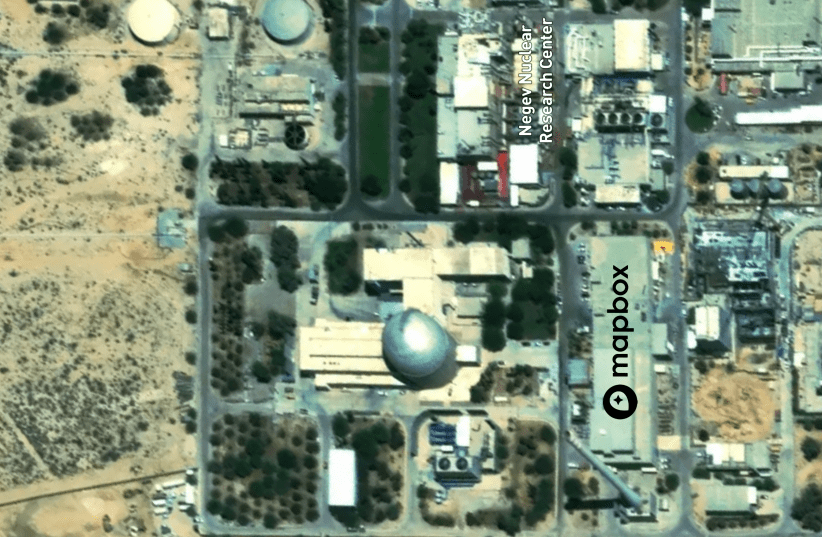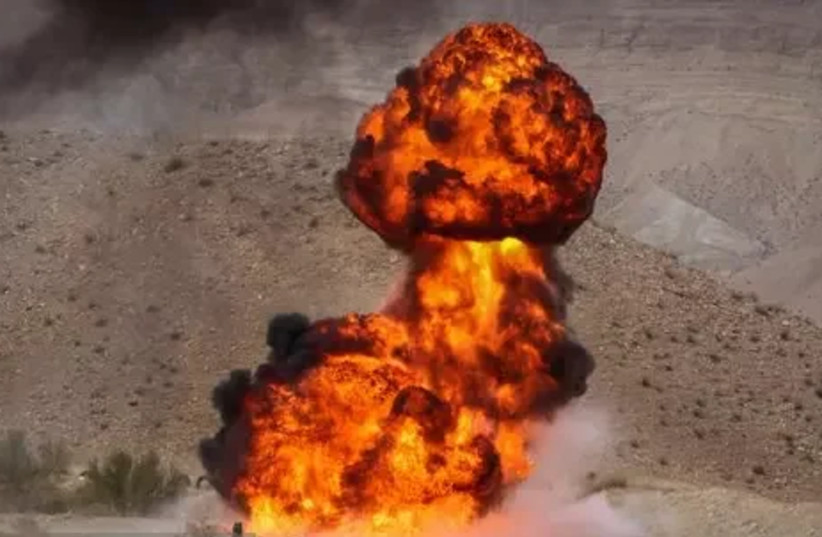Iran has published and distributed a video of rockets and drones being used to attack Dimona in the Negev Desert. It says the attack took place during the recent 17th Great Prophet drill with the Islamic Revolutionary Guard Corps and the IRGC Air Force.
Tehran says it “simulated a missile and drone attack on the Dimona nuclear center using 16 ballistic missiles and five suicide drones, successfully,” according to its semi-official Fars News Agency. The Jerusalem Post reported on the initial videos on Saturday. Iran has now doubled down with its own reports, bragging about its abilities.
— IMA Media • ایما مدیا (@imamedia_org) December 25, 2021
This matters more than in the past because Iran is threatening to attack the Dimona nuclear facility, a dangerous escalation in rhetoric. It is also tied to Tehran revealing aspects of its drone program and new technology.
The video was published by Fars and Tasnim New Agency, main Iranian media outlets linked to the government and the IRGC. This means the video is a purposeful attempt by Iran to threaten Israel, which, of course, isn’t exactly new. Tehran threatens Israel everyday with various forms of destruction; it continually has to come up with new threats.
However, the decision by Iran to test long-range ballistic missiles and unveil a new multiple drone launcher while splicing that with a digital mock-up of Dimona appears to be a new level of Iranian aggressive threats.
Fars published the video in full, which has been circulated online for several days. According to Tasnim’s defense correspondent, “In the last stage of the joint exercise, 16 types of solid and liquid fuel ballistic missiles, as well as 10 suicide UAVs known as Shahed-136 drones, simulated targeting Dimona.”
Iran simulated “targeting the development of weapons of mass destruction by the Zionist regime,” the report said. In the initial stages of the drill, Iran had showcased IRGC missiles and drones, it said.
Tehran has now released the high-quality videos to its media. The videos “show the power of precision and accuracy of the missiles and drones,” the report said. The drones were used to “hit the cooling tower of Dimona,” Tasnim reported.
Iran said a similar drone used by the Iranian-backed Houthi rebels in Yemen, which is called “Eid,” was used against Aramco facilities in Saudi Arabia. This January, a report in Newsweek said the Shahed-136 drone might have been based in Yemen. This drone at the time was said to have a range of about 2,000 km. (1,240 miles). This means it could reach southern Israel from Yemen. It now appears Iran has confirmed deployment of this type of drone or a close copy of it in Yemen.
Overall, this points to increasing Iranian drone threats and also the way in which Iran is combining drones with missiles in its attack plans. In 2019, Iran used 25 drones and cruise missiles to attack Saudi Arabia’s Abqaiq energy facility. This lifted the curtain on Iran’s capabilities, which have expanded since then.
Iran has sent drone technology to Hezbollah, the Houthis, Hamas and to militias in Iraq. In May, pro-Iran elements in Iraq used a drone to fly over Syria in an attempt to attack Israel. In February 2018, Iran used a drone from the T-4 base in Syria to fly into Israel airspace. It has also used drones to attack US forces in Iraq and at Tanf base in Syria. This July, Iran used drones to target a commercial ship in the Gulf of Oman.
However, the new use of small kamikaze, long-range drones combined with ballistic missiles, as illustrated by the recent drill and videos, represents yet another combination of dangerous munitions. That Tehran has openly threatened Dimona and says it wants to use this technology to attack illustrates how Iran is seeking to influence the region through pretending it has this level of precision and technology.
Meanwhile, Tehran is still negotiating with the West and various countries about reaching a possible Iran deal in Vienna. Its aggressive video appears to indicate that it retains this military option alongside the talks, with no fear of consequences over its threats.

